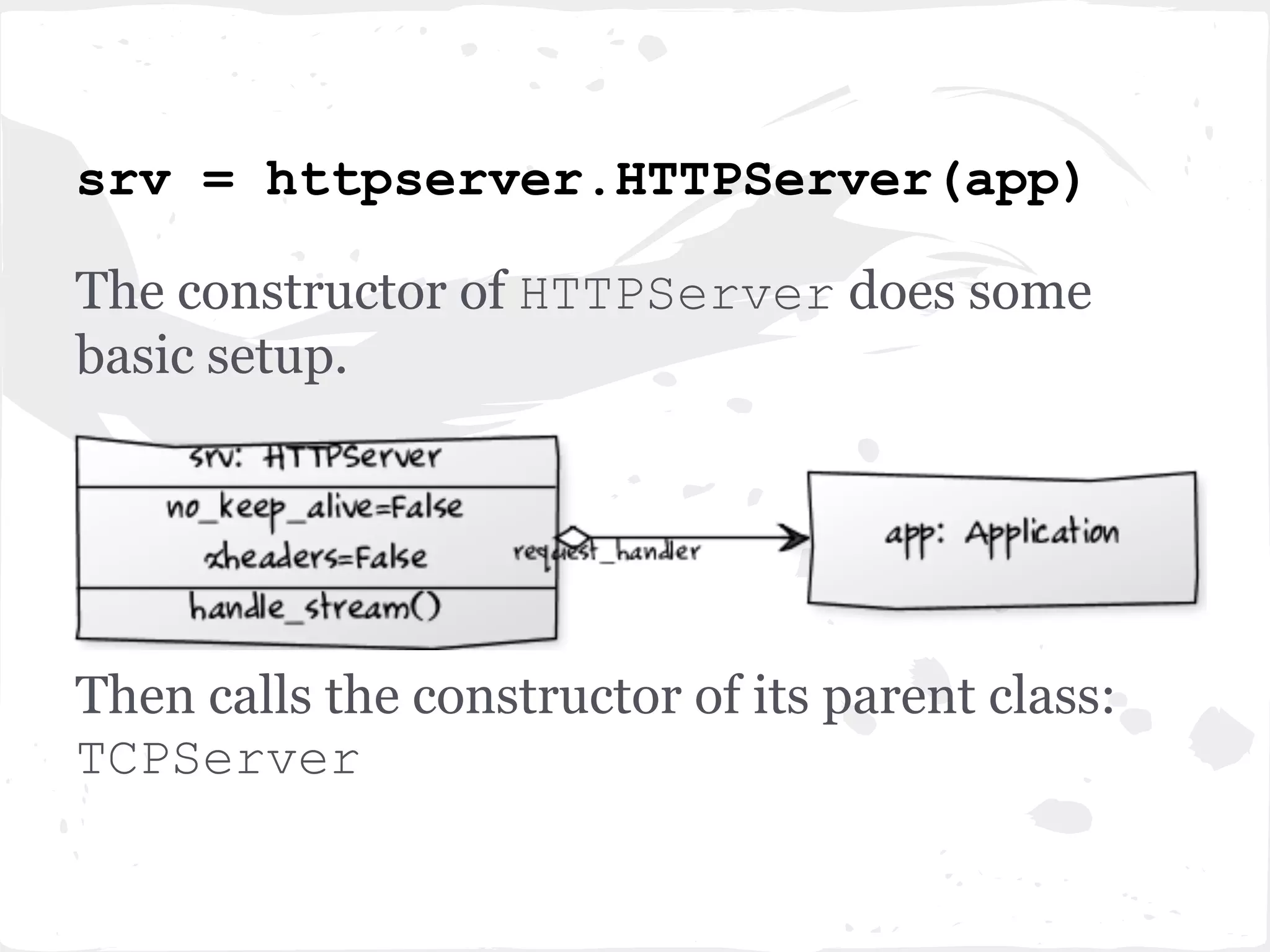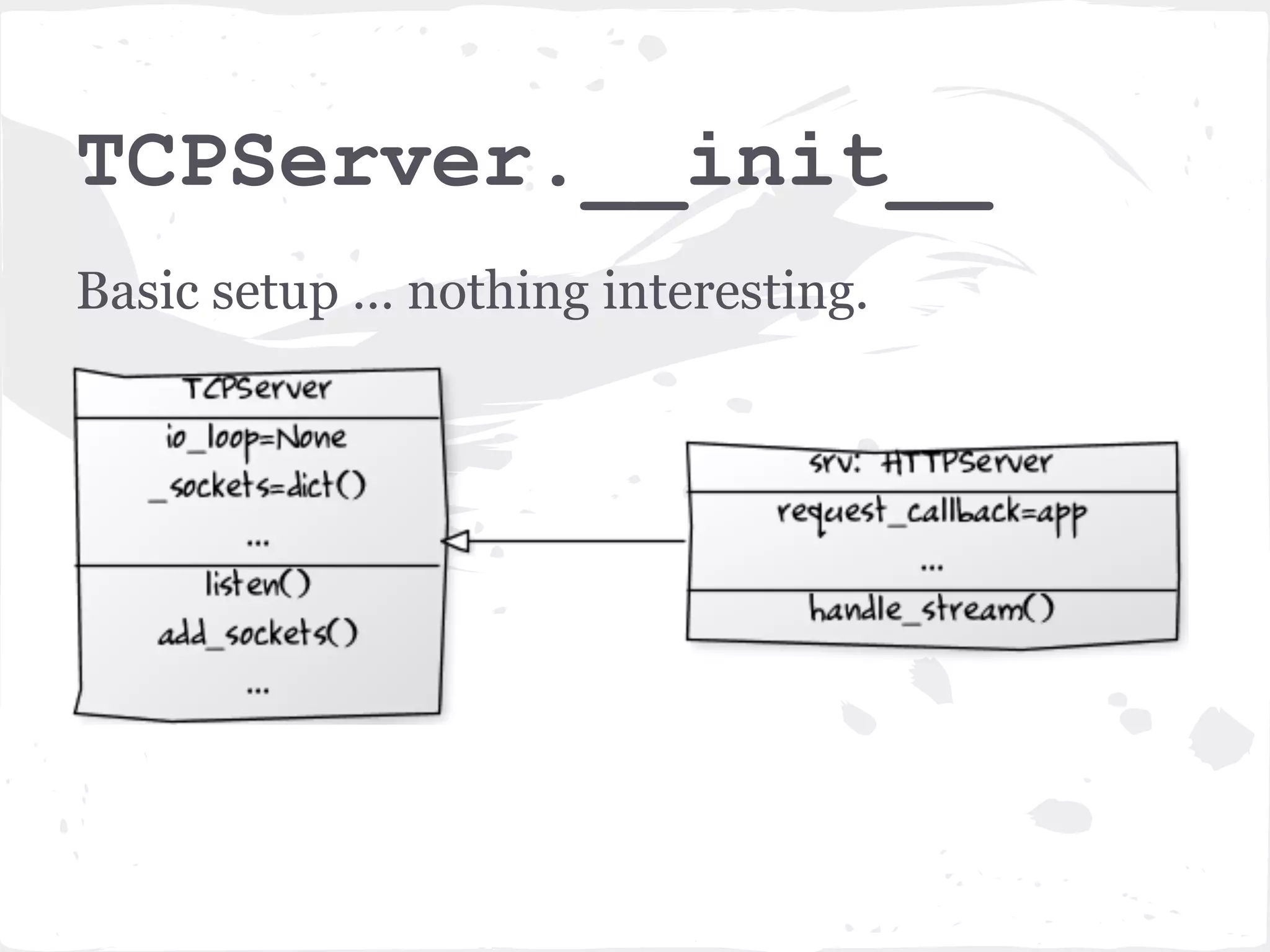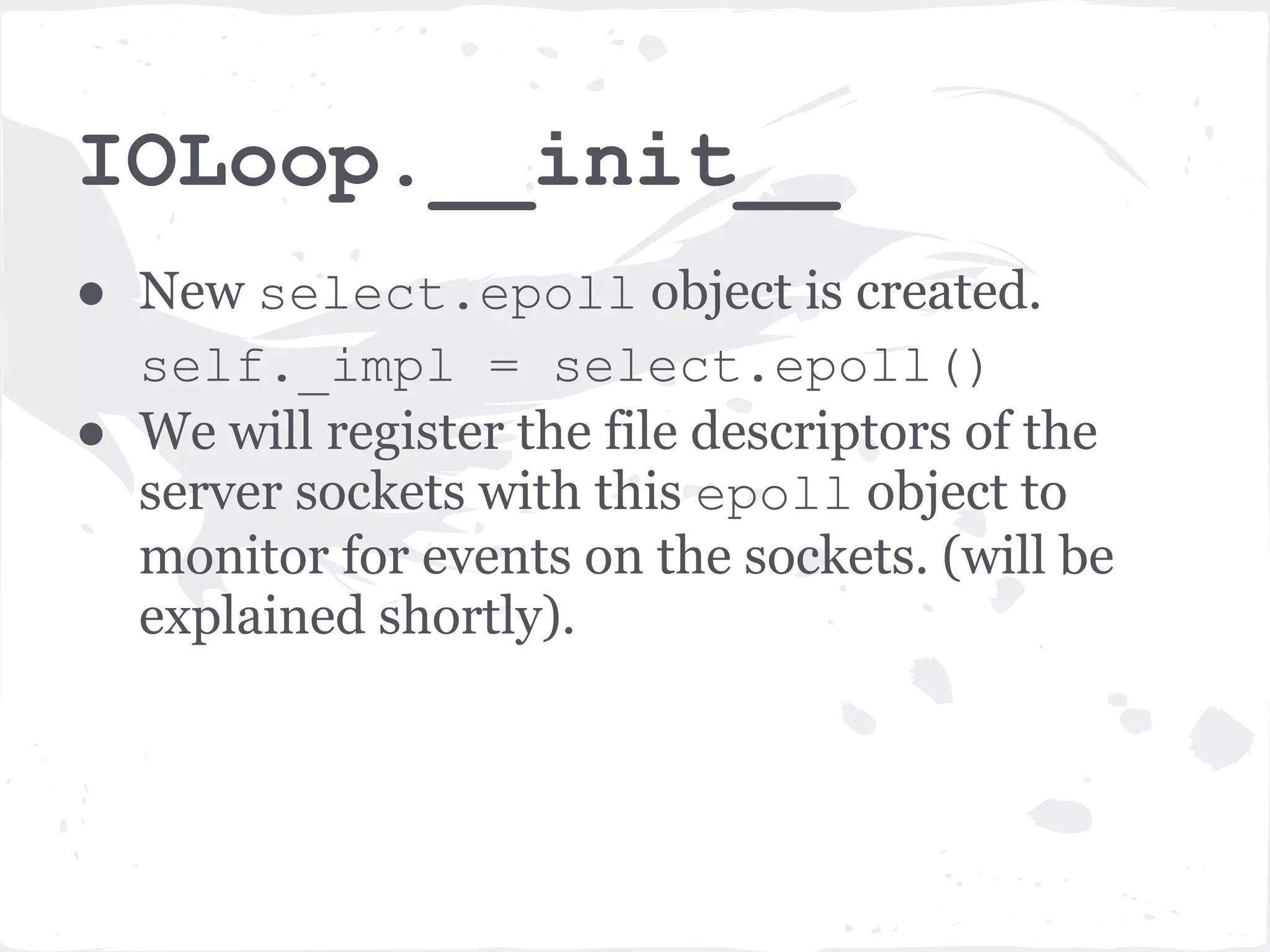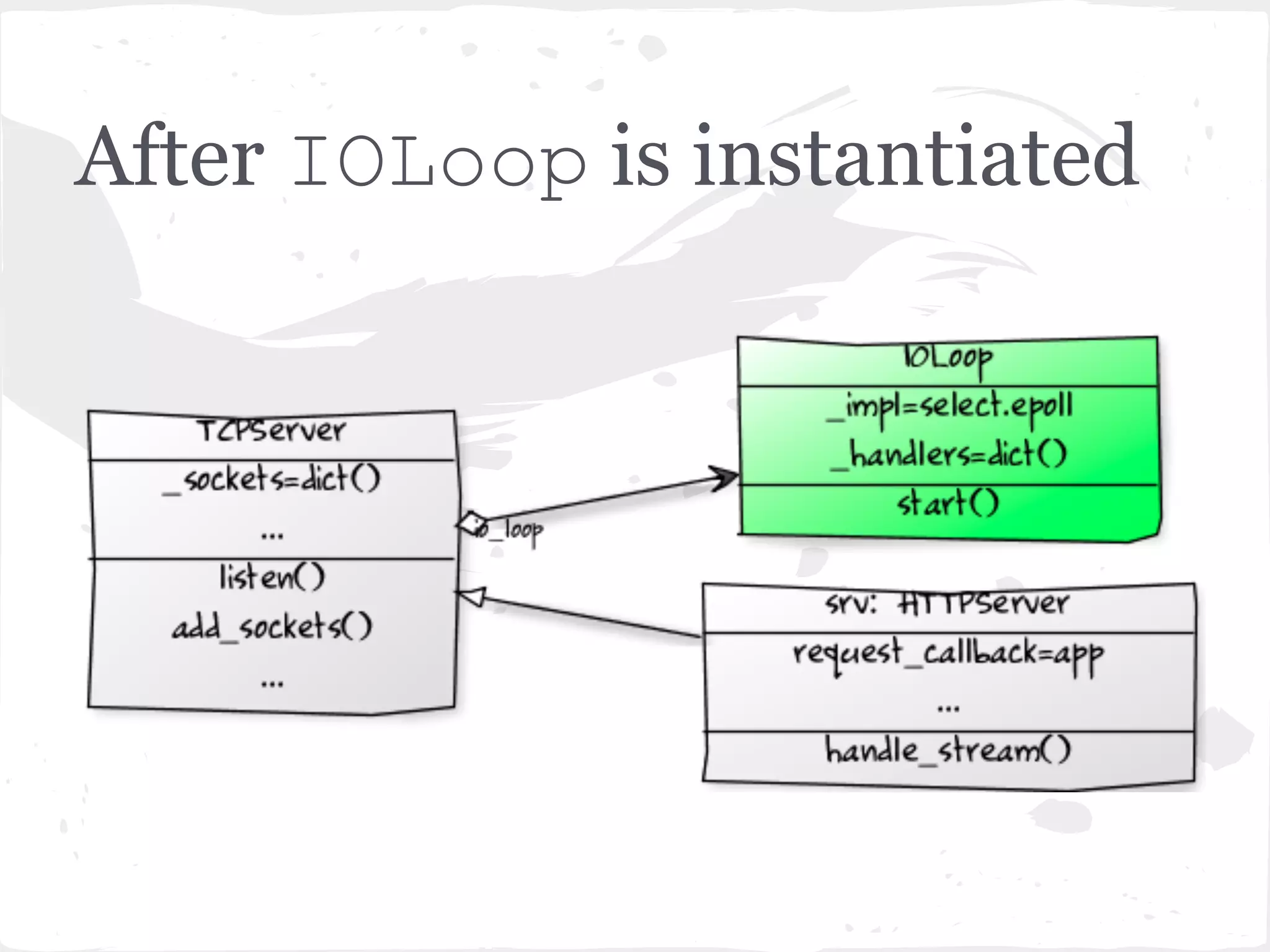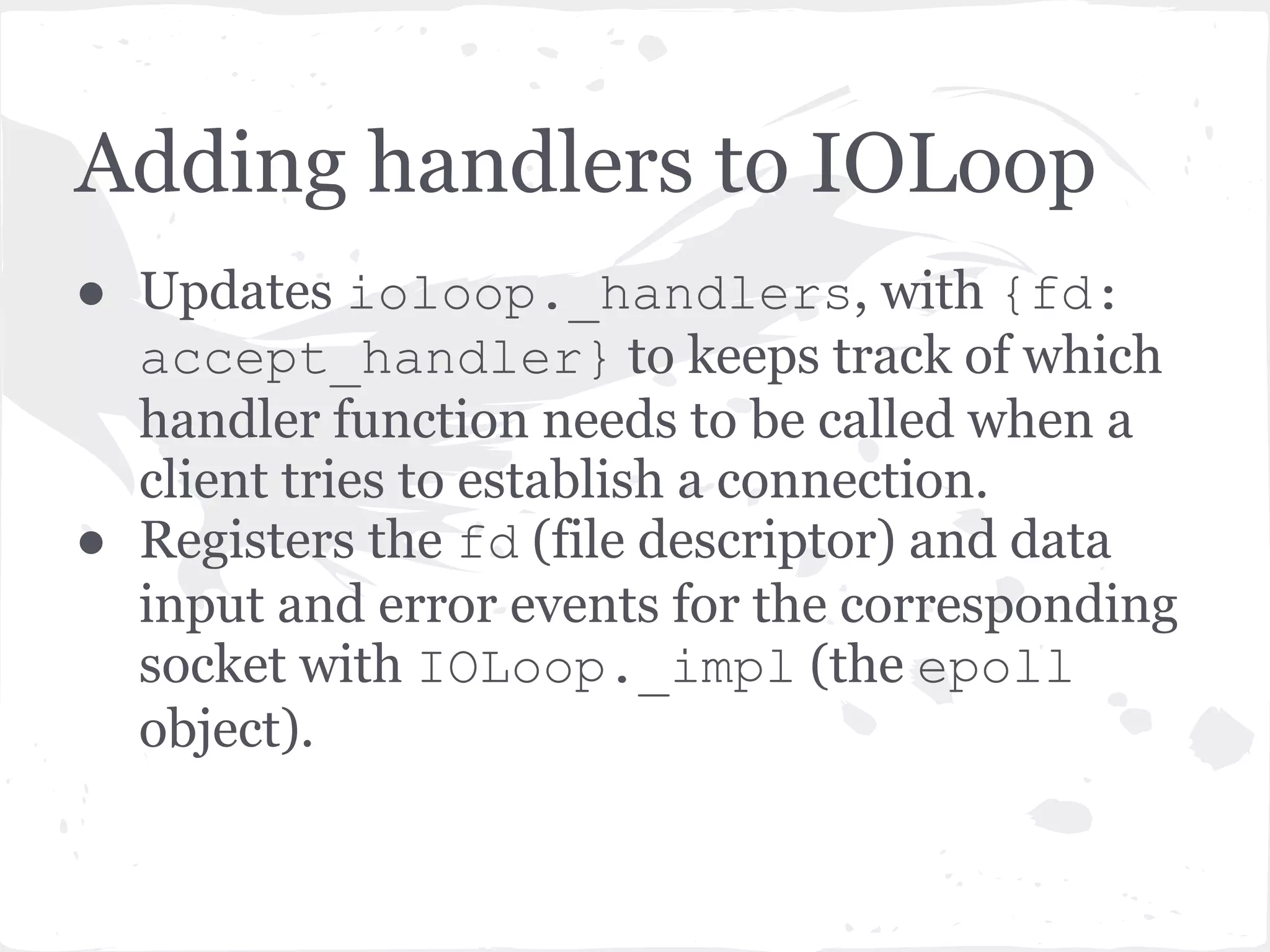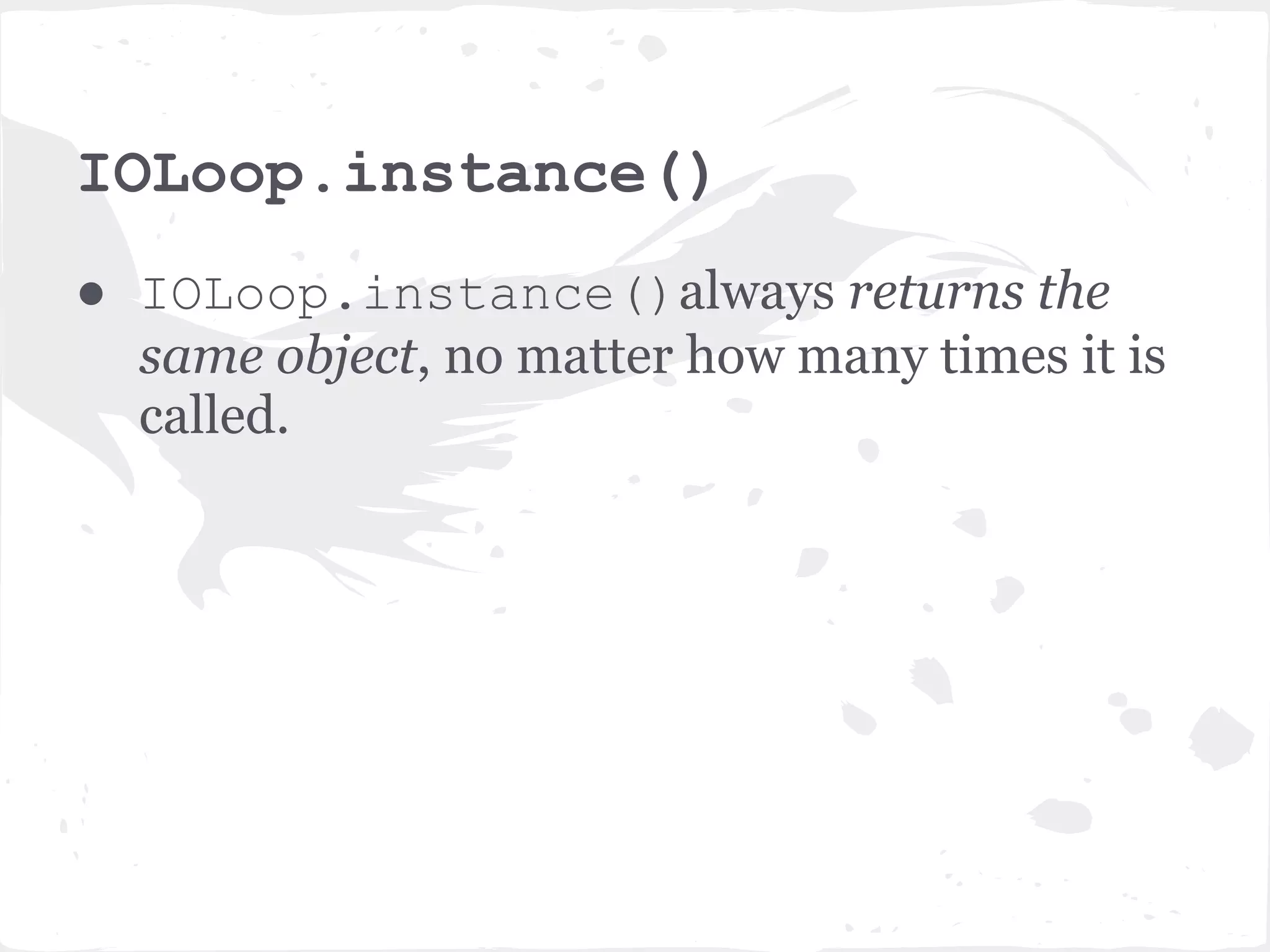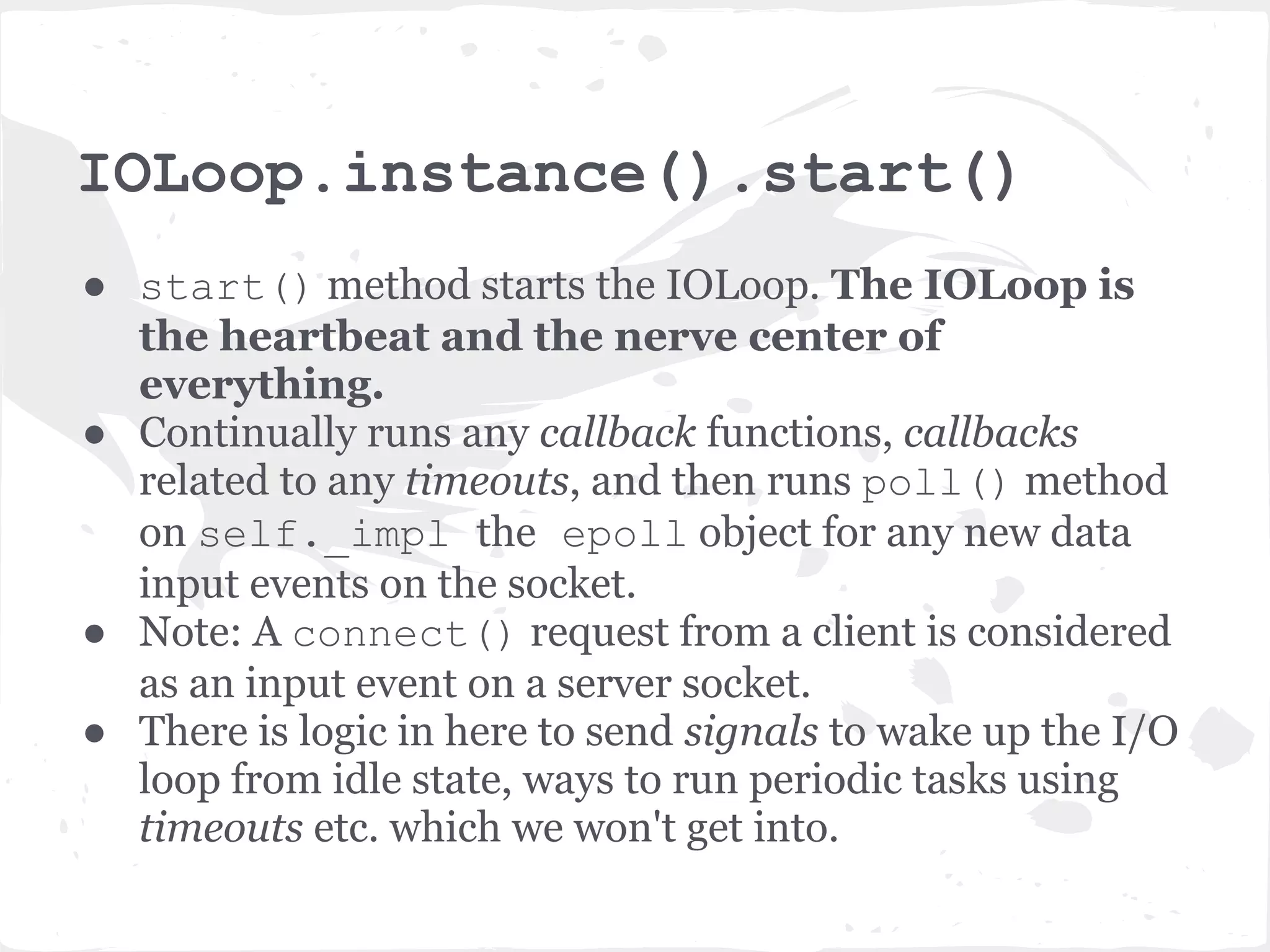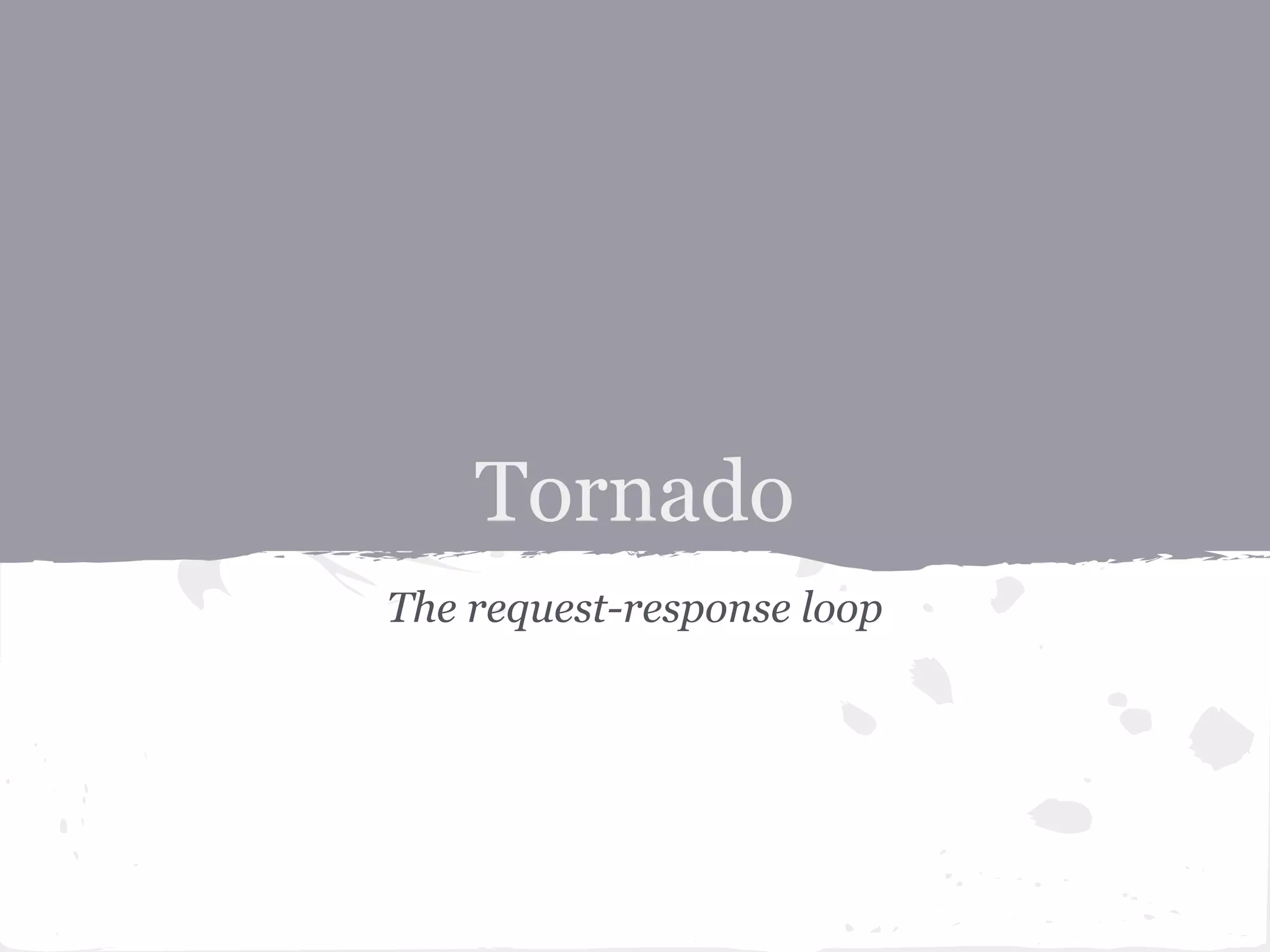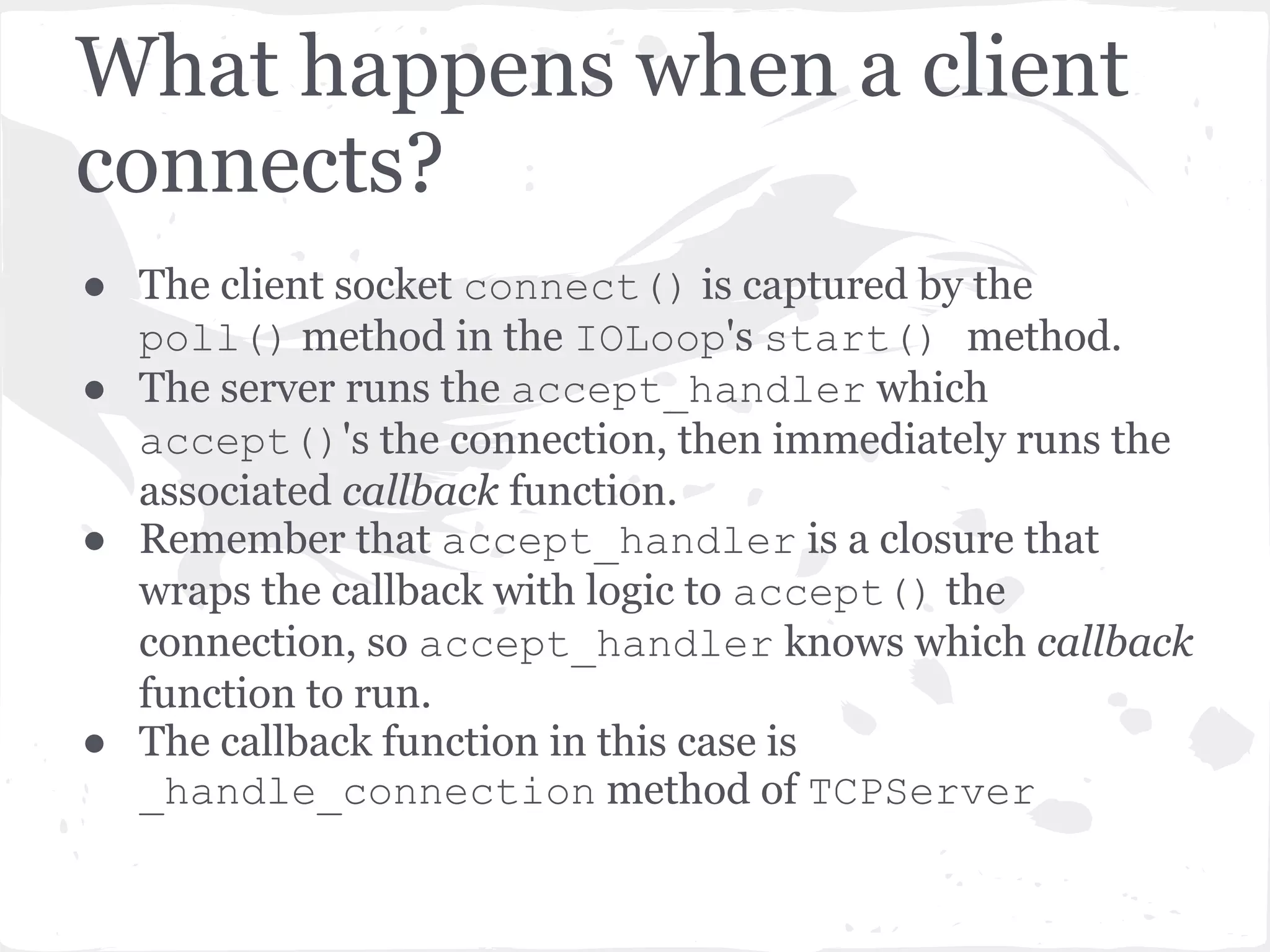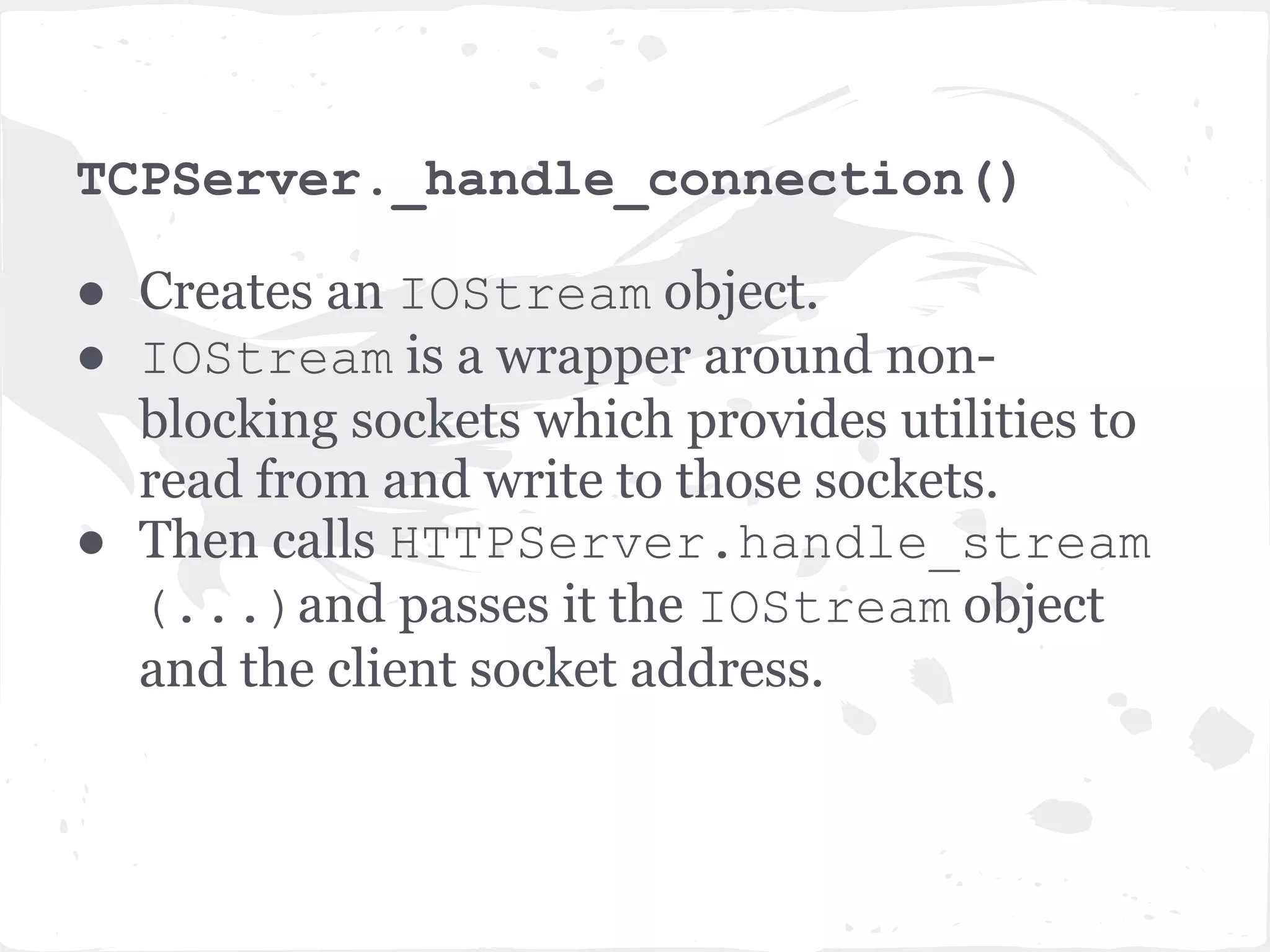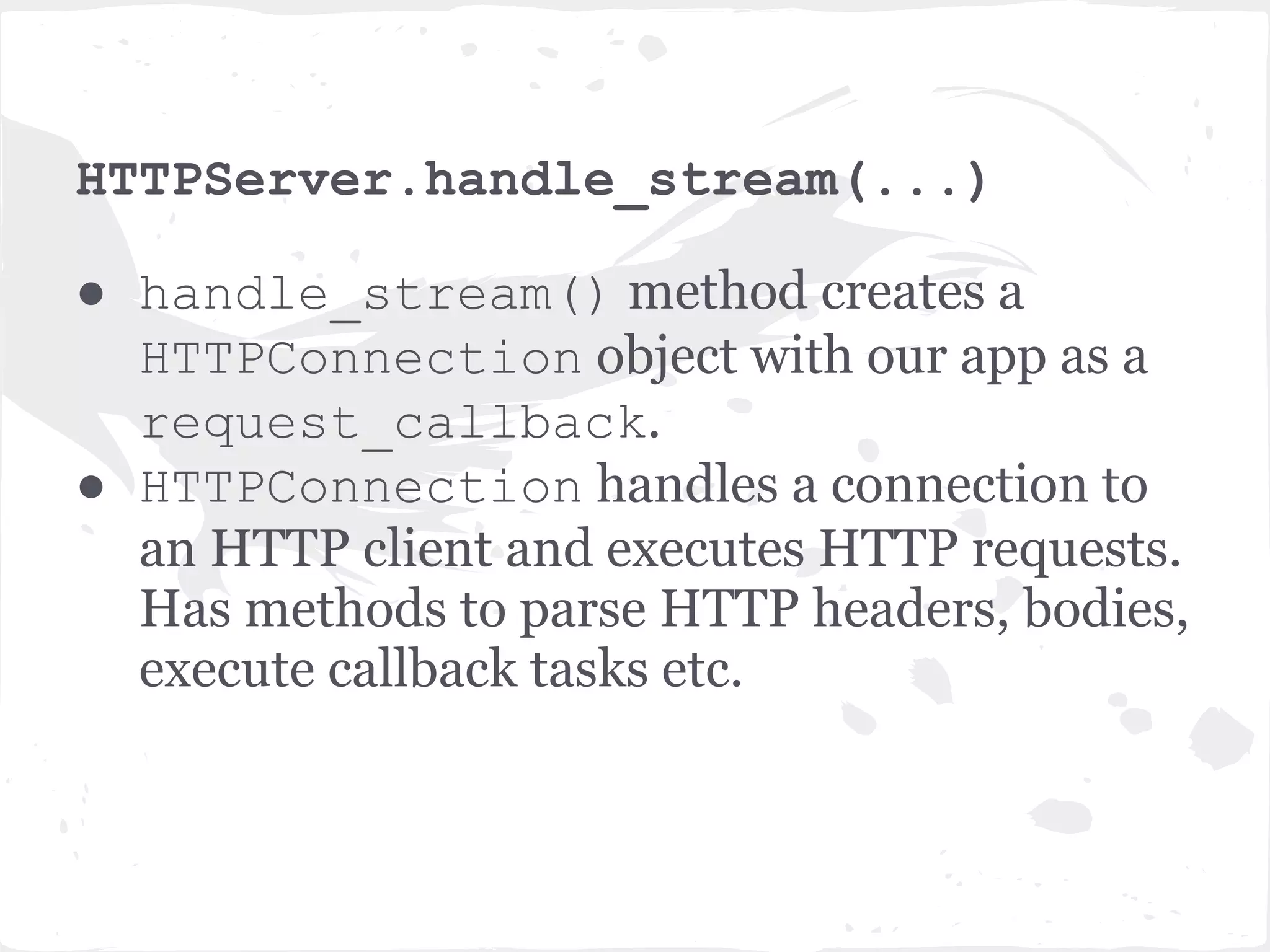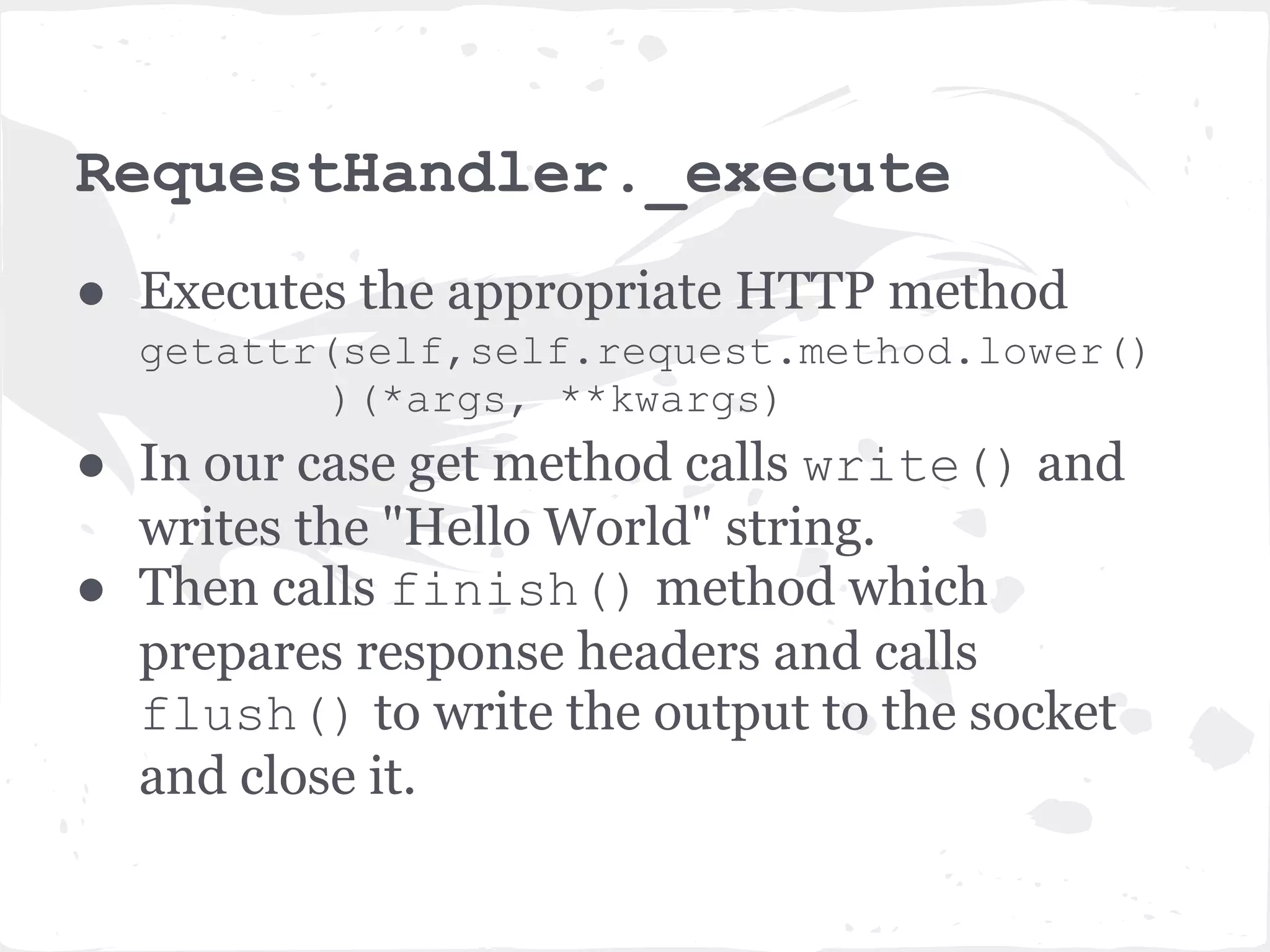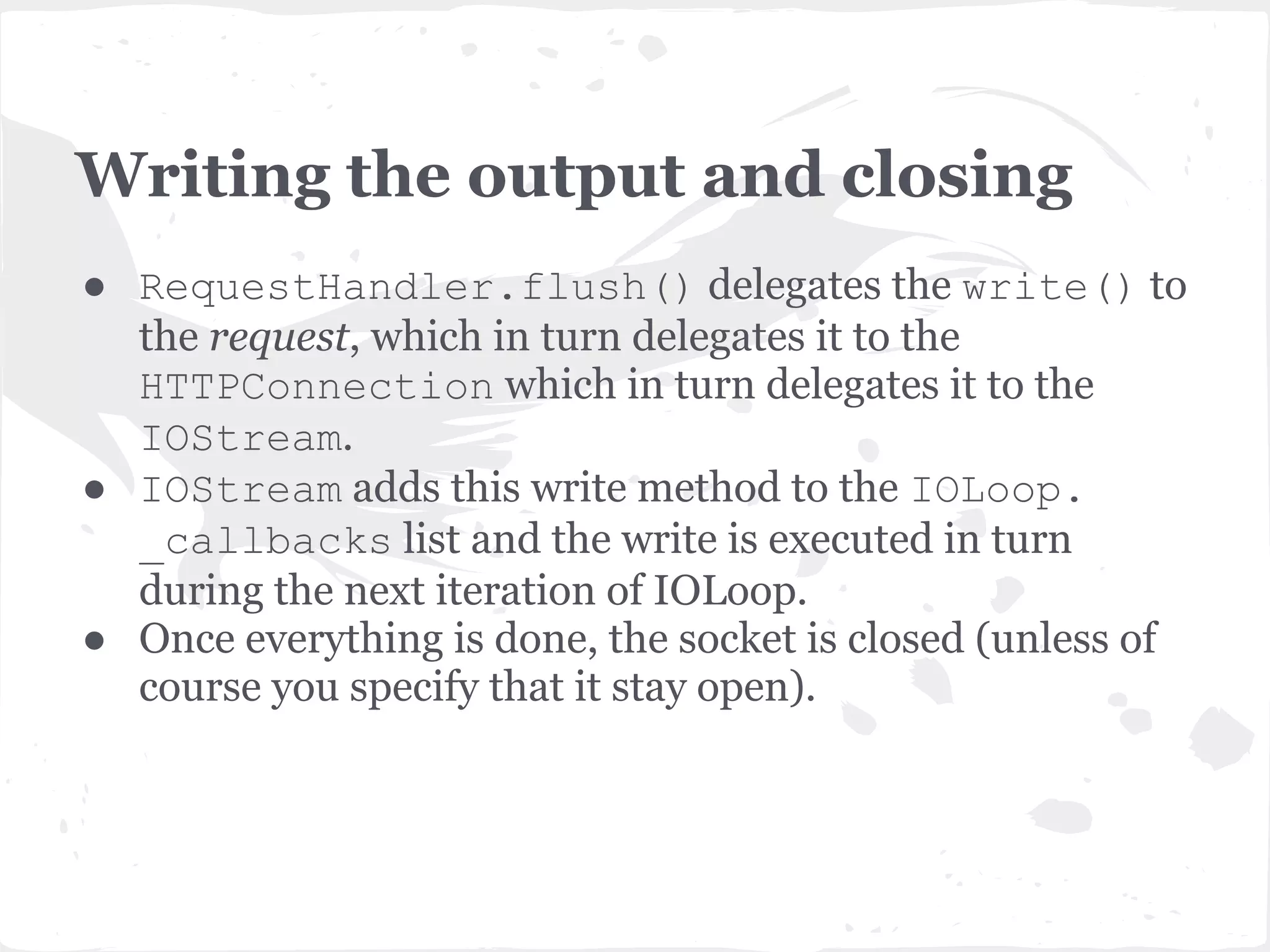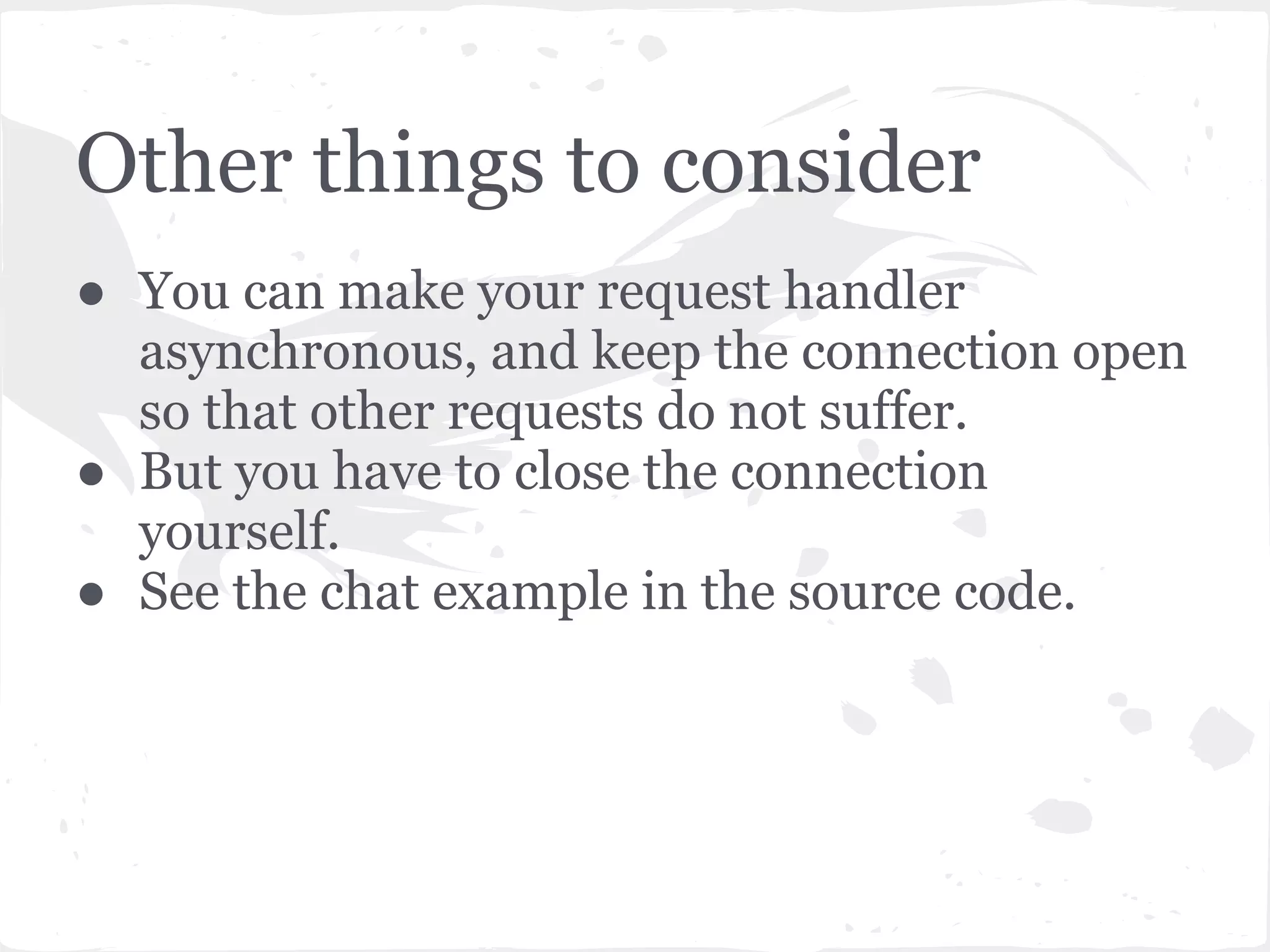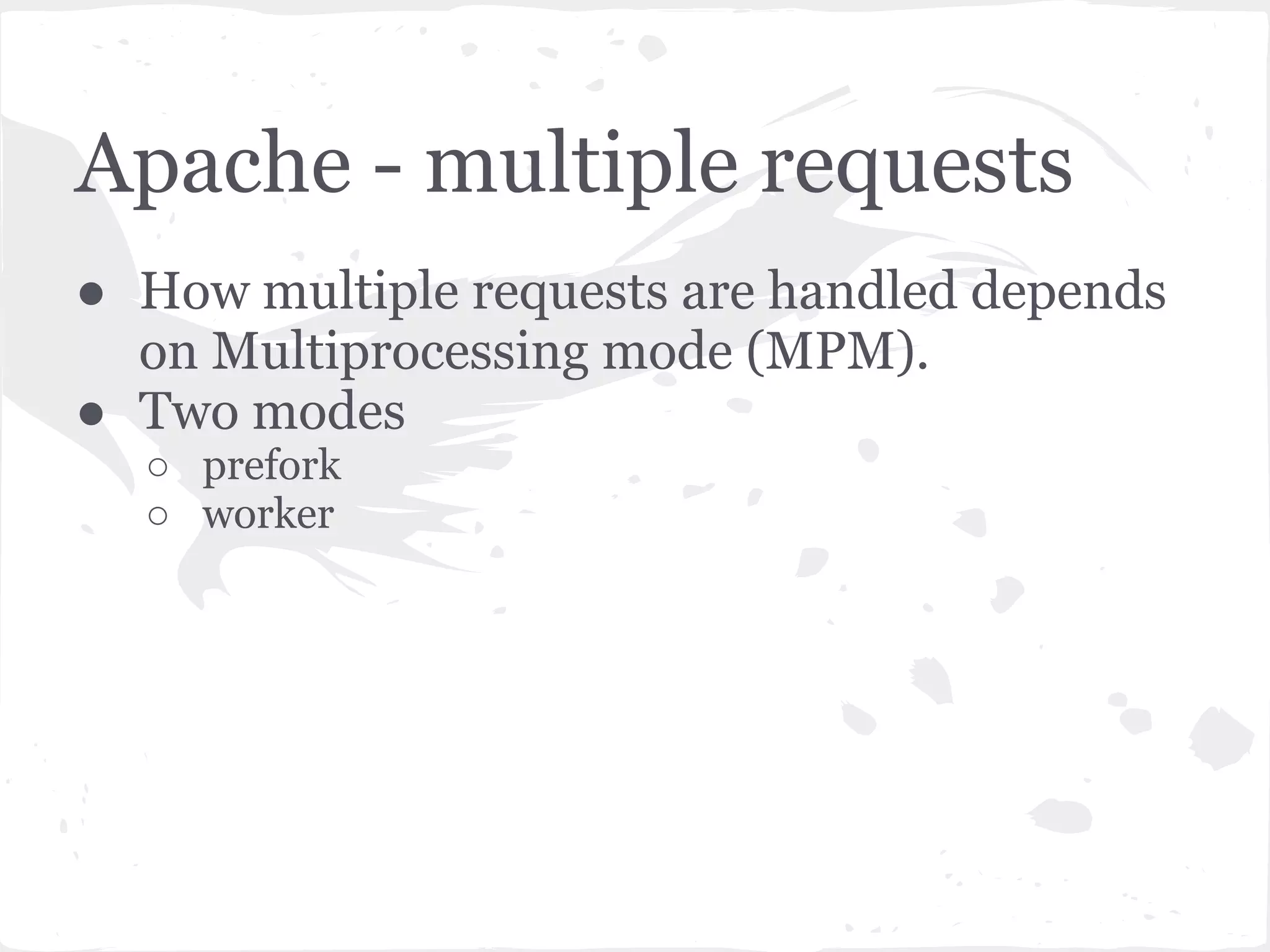This document provides an overview of the Tornado web server and summarizes its internals. It begins with an introduction to Tornado, describing it as a scalable, non-blocking web server and framework written in Python. It then outlines the main Tornado modules and discusses sockets, I/O monitoring using select, poll and epoll, and how Tornado sets up its server loop and handles requests.




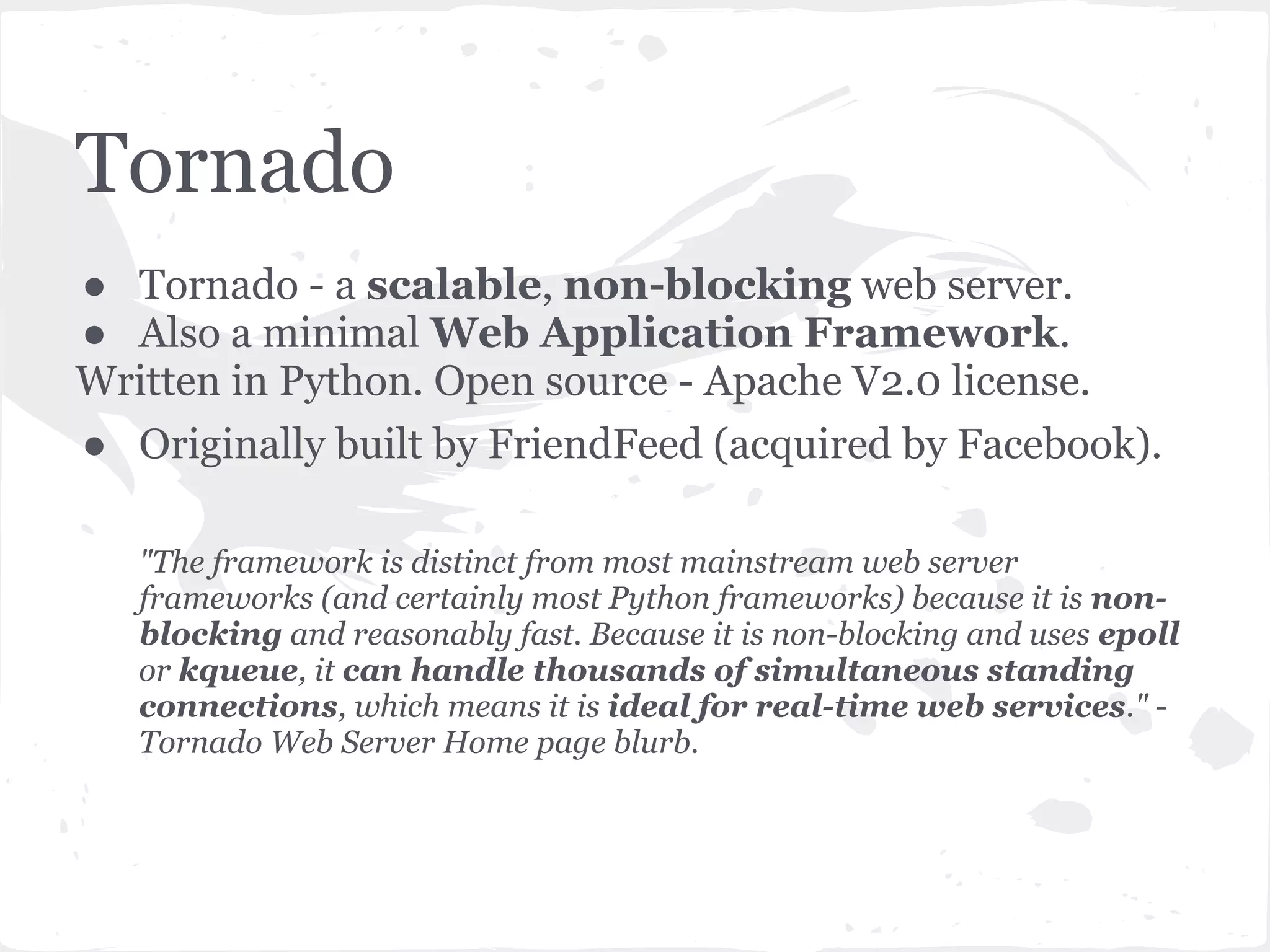
![Hello World! from tornado import ioloop from tornado import web class MainHandler(tornado.web.RequestHandler): def get(self): self.write("Hello, world") app = web.Application([(r"/", MainHandler),]) if __name__ == "__main__": srv = httpserver.HTTPServer(app) app.listen(8080) ioloop.IOLoop.instance().start()](https://image.slidesharecdn.com/tornado-120807161639-phpapp02/75/Tornado-Web-Server-Internals-6-2048.jpg)

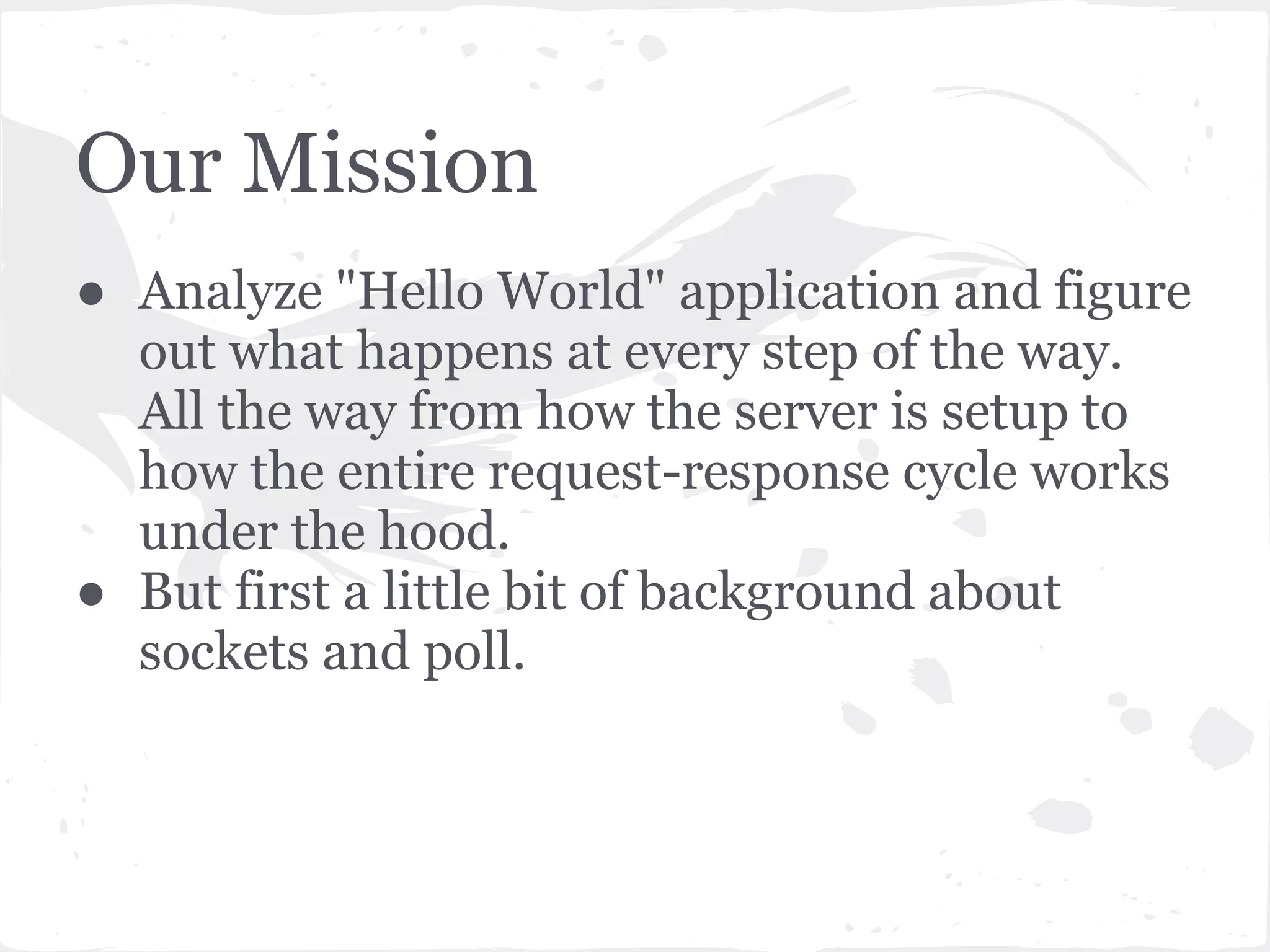

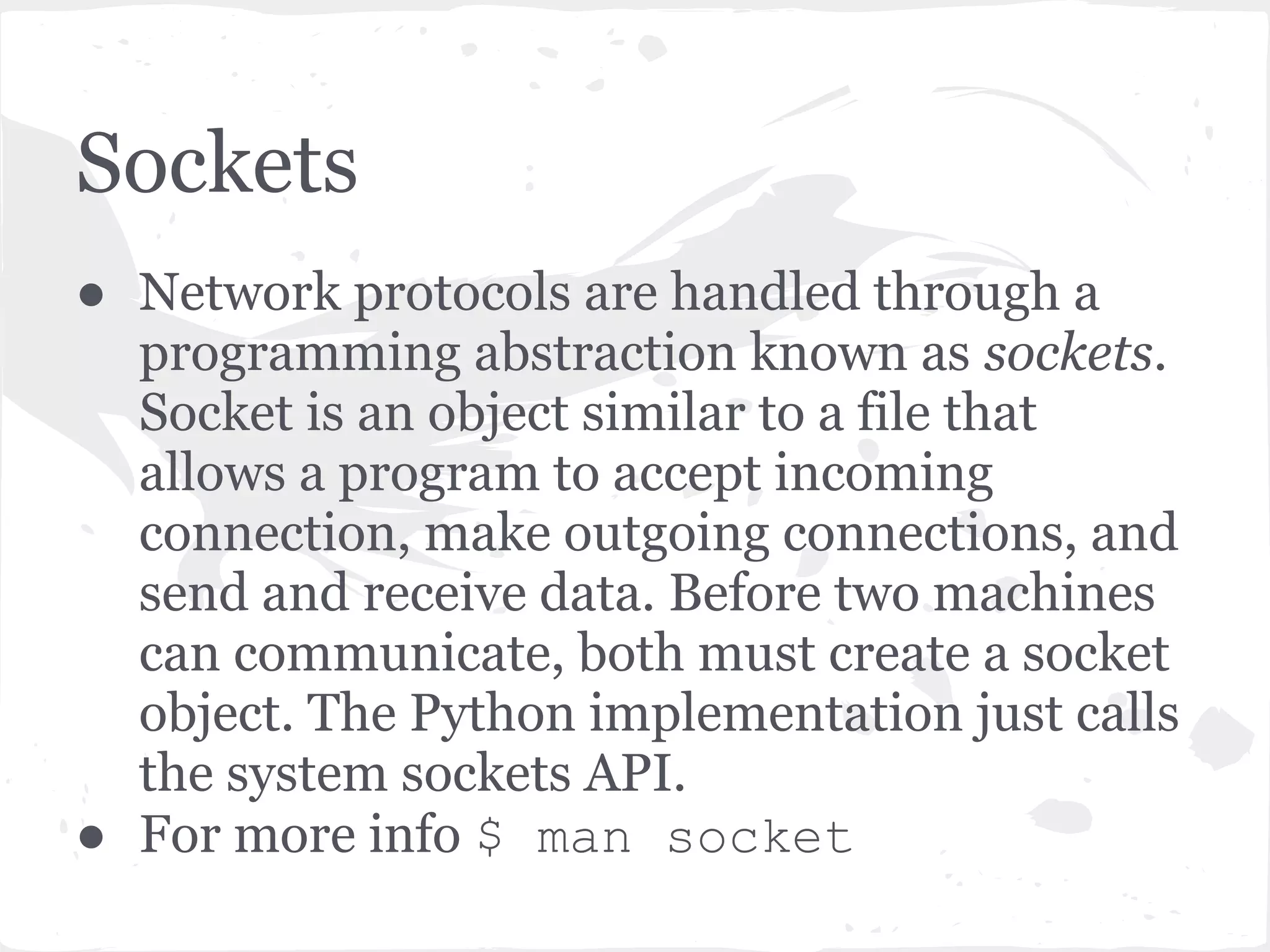
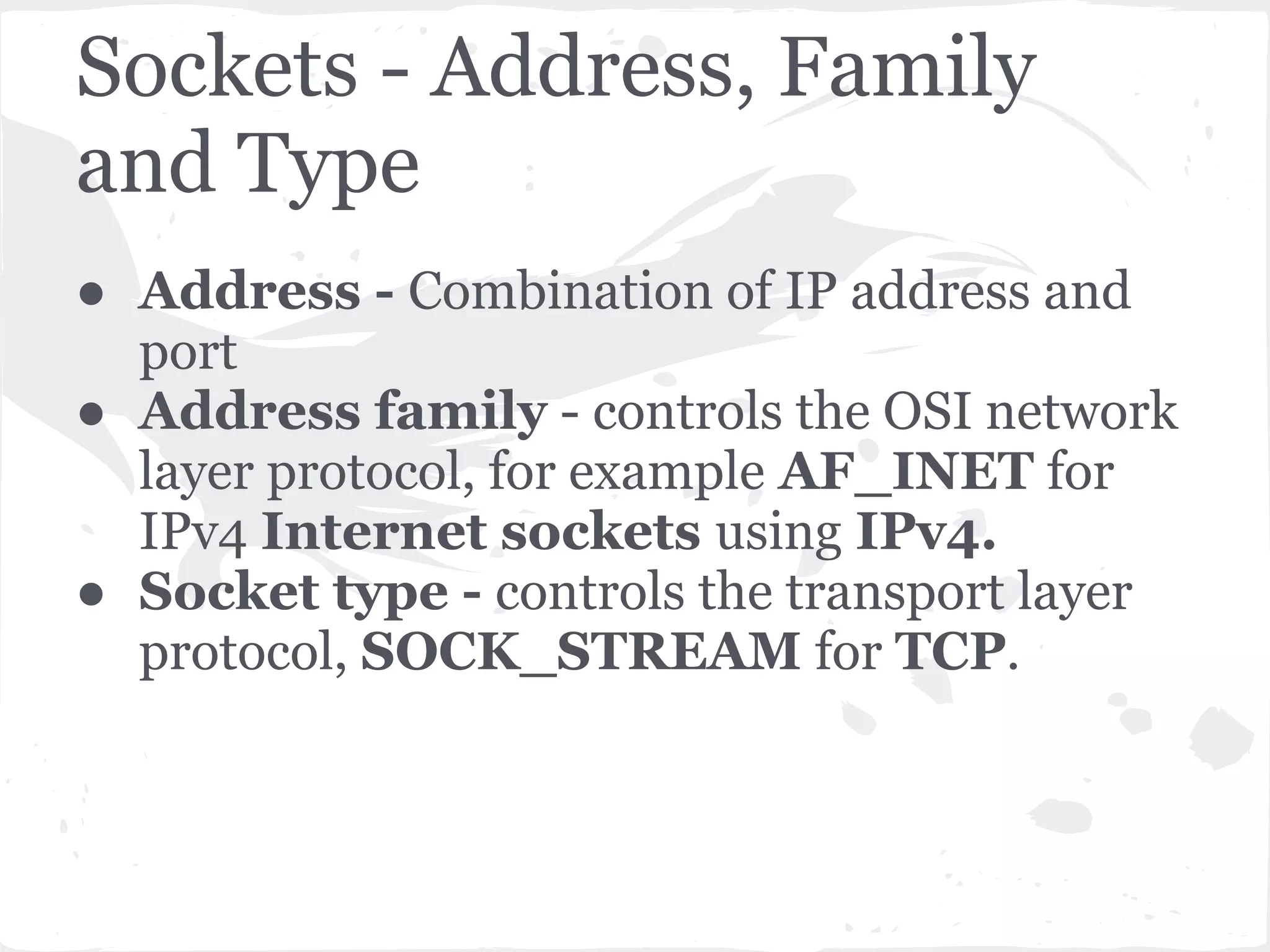


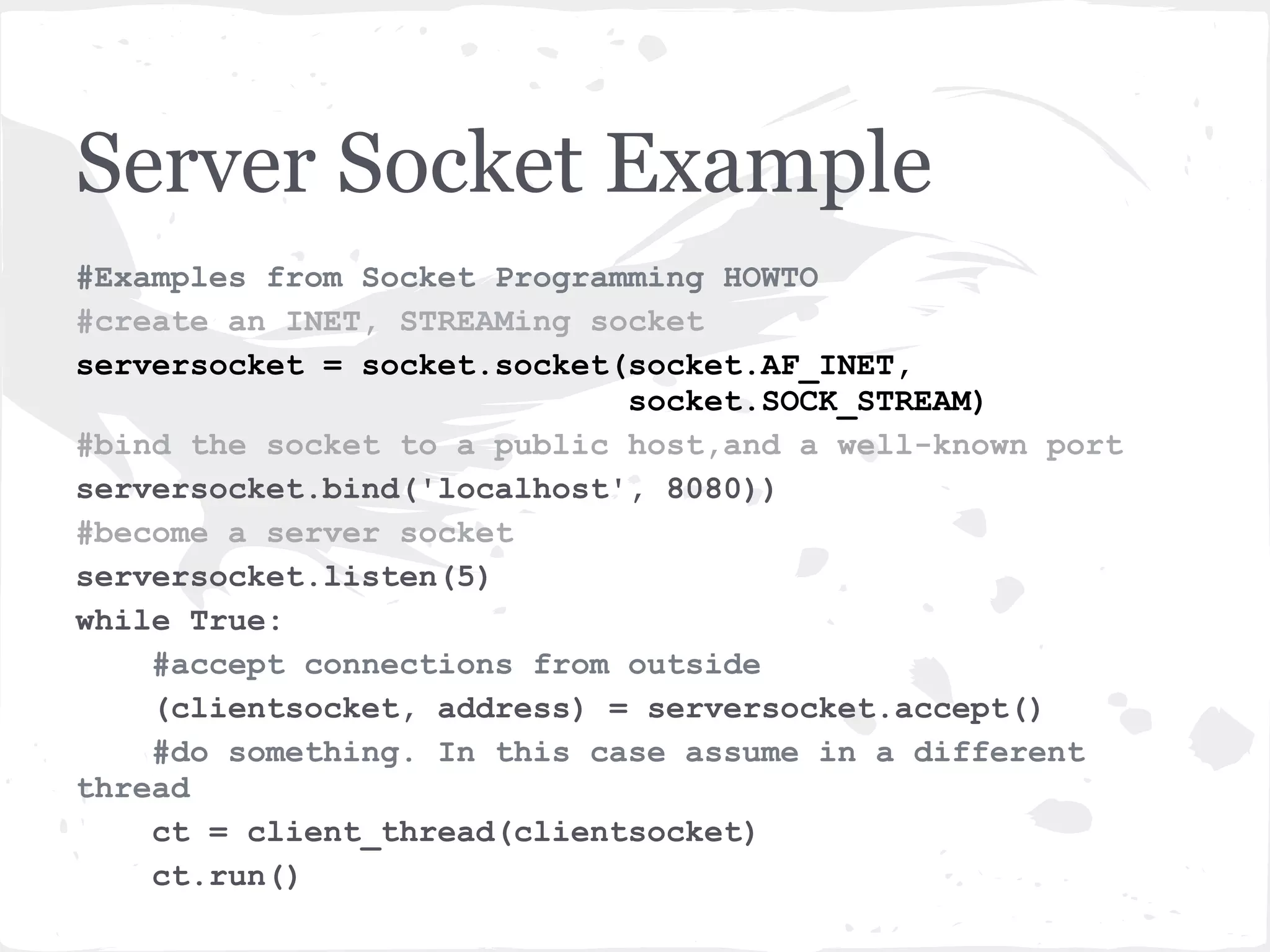





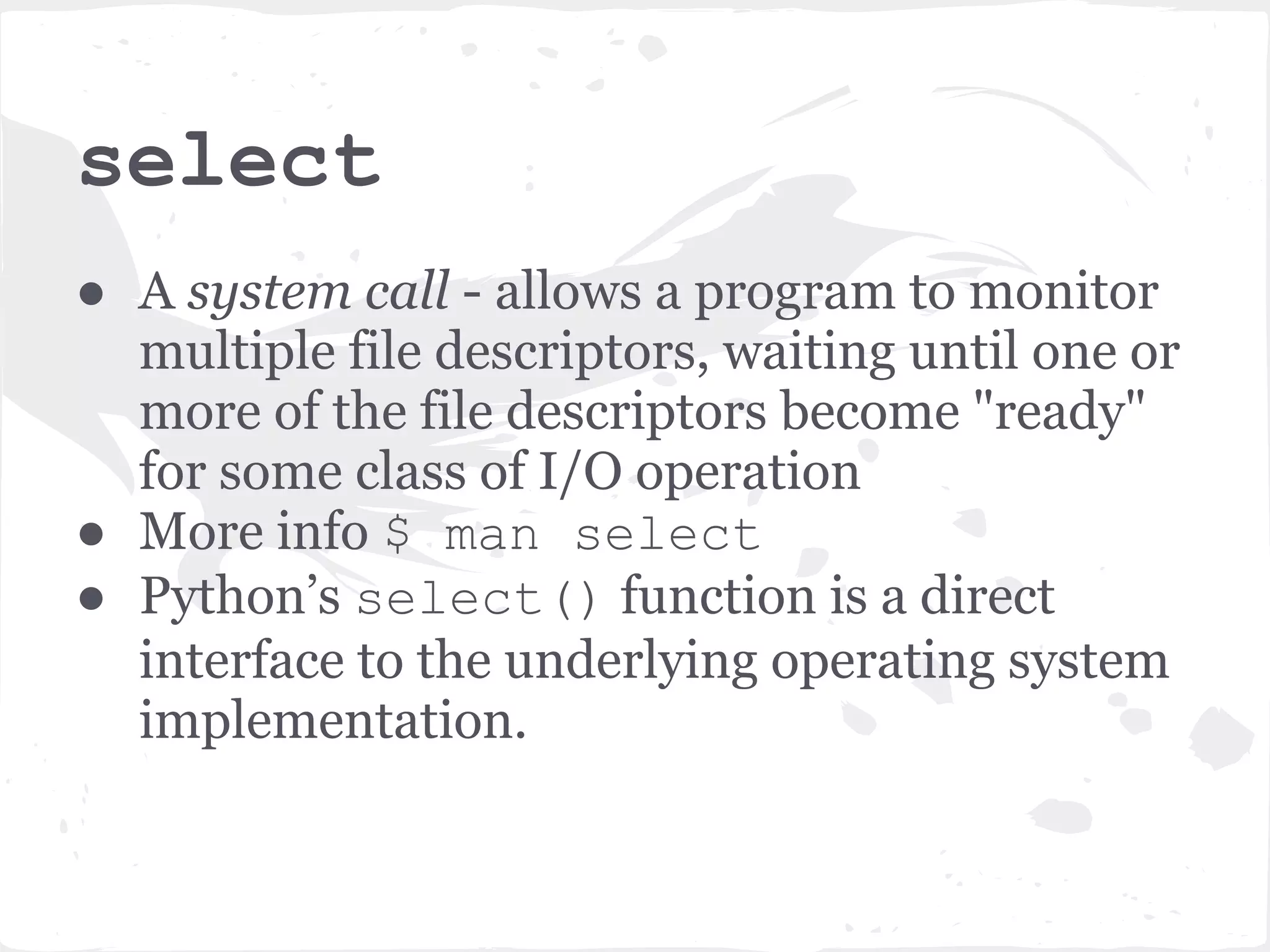

![poll API ● Create a poll object p = select.poll() ● Register a fd and the events of interest to be notified about p.register(fd, events) ● Start monitoring. You will be notified if there is an event of interest on any of the registered fd's. p.poll([timeout])](https://image.slidesharecdn.com/tornado-120807161639-phpapp02/75/Tornado-Web-Server-Internals-22-2048.jpg)
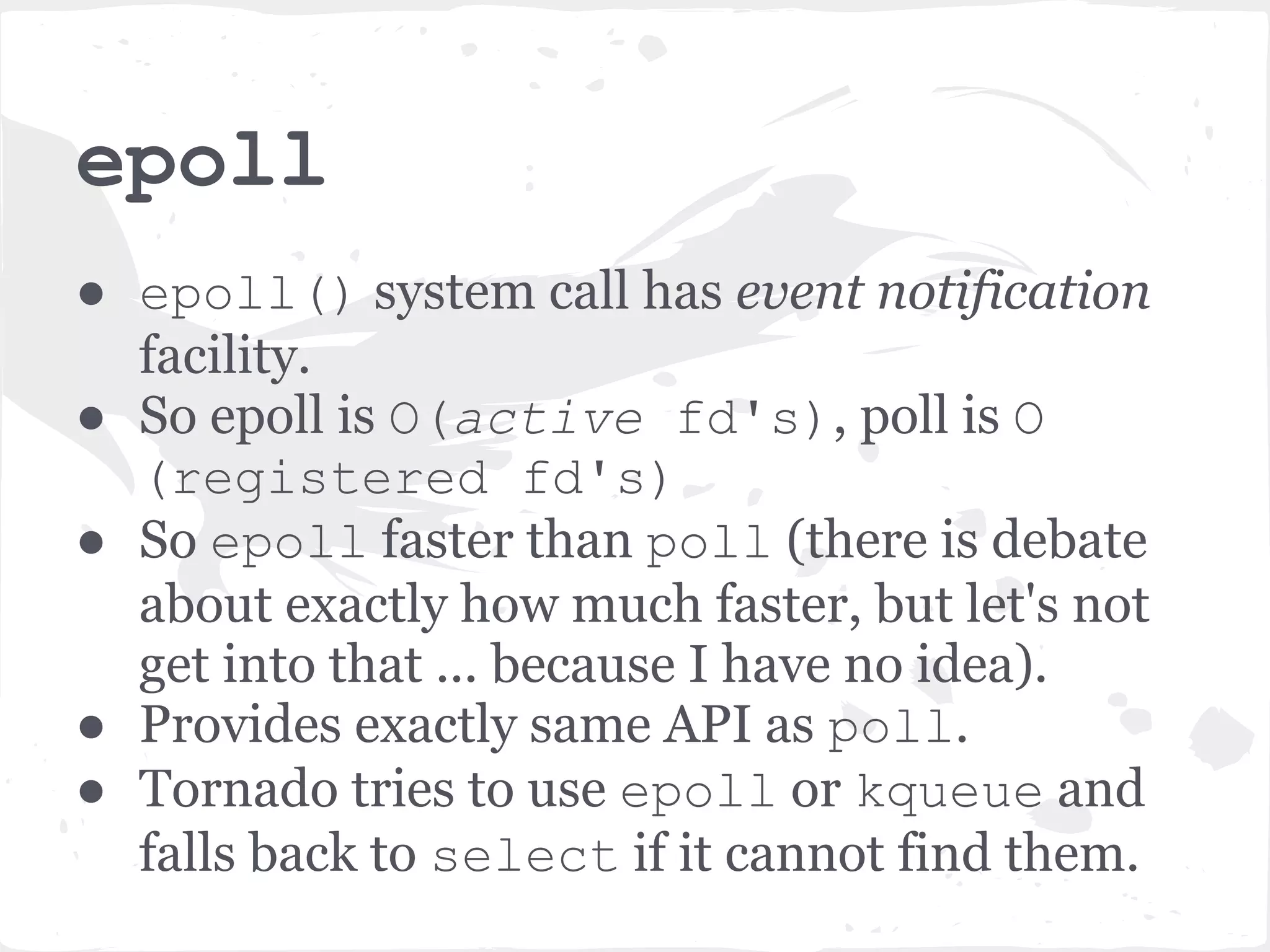

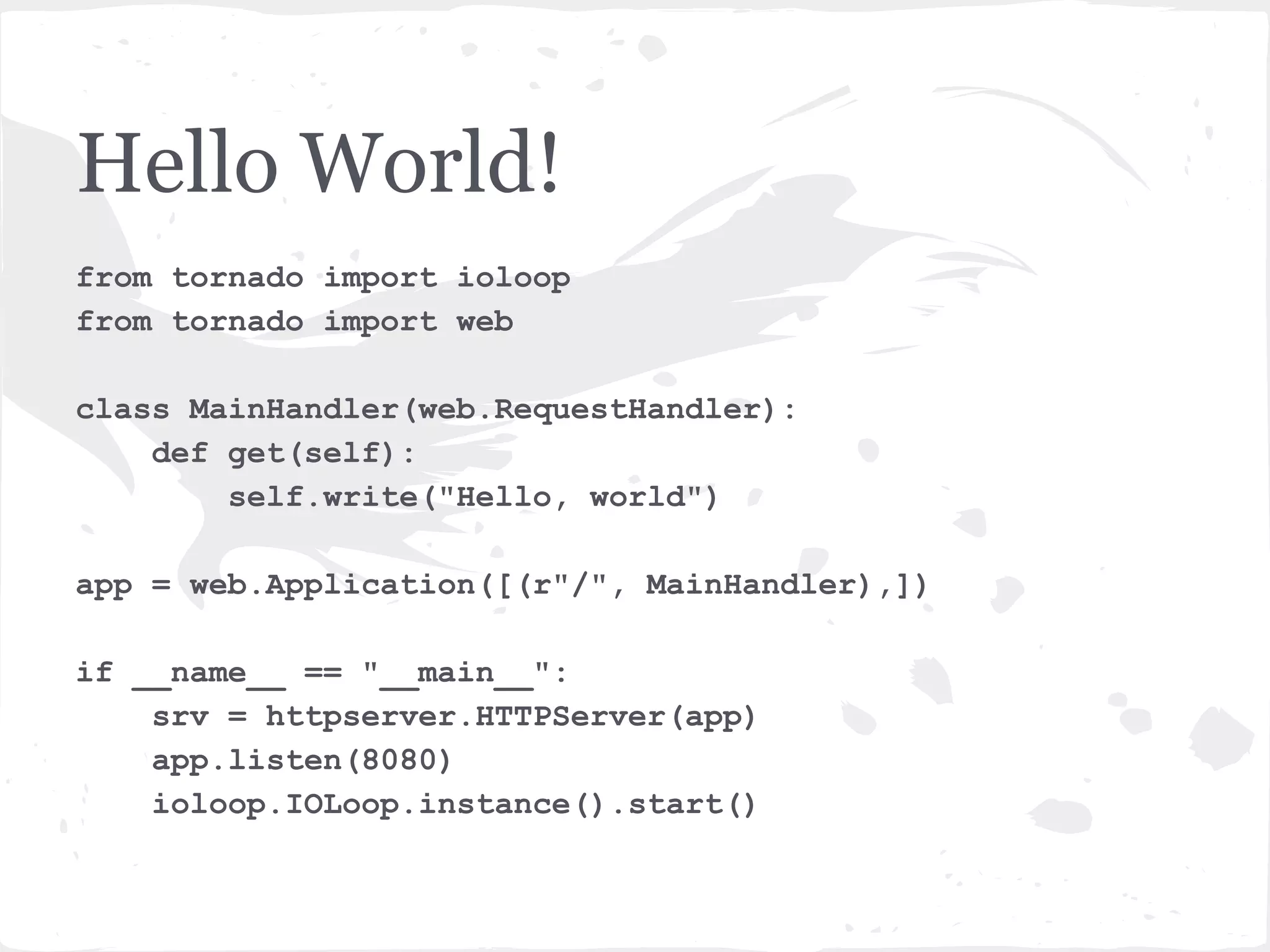
![Hello World! from tornado import ioloop from tornado import web class MainHandler(web.RequestHandler): def get(self): self.write("Hello, world") app = web.Application([(r"/", MainHandler),]) if __name__ == "__main__": srv = httpserver.HTTPServer(app) app.listen(8080) ioloop.IOLoop.instance().start()](https://image.slidesharecdn.com/tornado-120807161639-phpapp02/75/Tornado-Web-Server-Internals-26-2048.jpg)
